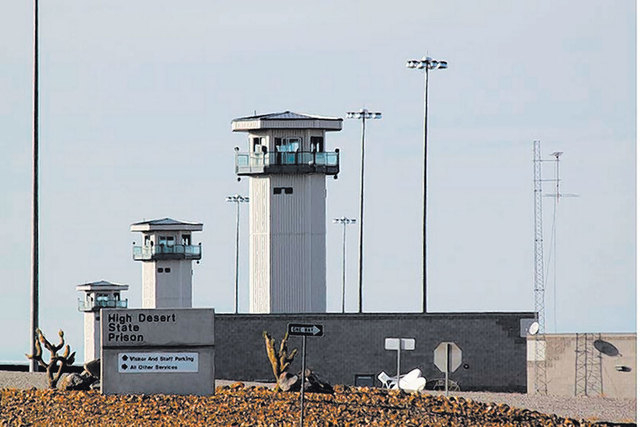EDITORIAL: Who do we put in prison — and why?
First, the good news.
Nevada’s prison population, the Review-Journal’s Sandra Cherub reported, has declined significantly in recent years when measured against the overall population, falling from a high of 520 for every 100,000 state residents to 450. In addition, the state’s recidivism rate of 27 percent is well below the national average of 50 percent. All this amid stable or falling crime rates, notwithstanding the recent spike in violent activity in the Las Vegas area.
Now, the bad news.
Without some kind of sentencing reform, an expert told a state panel on Friday, the number of people behind bars in Nevada will increase by another “2,000 to 3,000 inmates very quickly.” Most will be nonviolent offenders. The associated expenses would have major ramifications for the state budget.
James Austin, president of the JFA Institute — a nonprofit organization that evaluates criminal justice practices — made his presentation to the state’s Advisory Commission on the Administration of Justice, a 17-member board that reviews criminal justice policies and recommends reforms designed to improve the system and ensure the prudent allocation of taxpayer resources.
Among other things, Mr. Austin recommended rethinking long jail terms for scores of mostly nonviolent crimes now classified as Class B felonies.
That’s all well and good, and it dovetails with bipartisan state and national efforts to move beyond warehousing low-level offenders in favor of alternatives that seek to break the cycle of self-destructive behavior while still protecting law-abiding citizens and keeping violent predators behind bars.
But Mark Jackson, the Douglas County district attorney, is correct in arguing that it’s difficult to advocate for changes without specifics on Nevada’s prison population. “If we’re going to have a serious discussion about what’s best for Nevada,” he said, “then we need to figure out who’s in prison.”
Indeed. At this point, a commission priority must be compiling a detailed analysis of who this state has put behind bars and why.
“No one is suggesting that people shouldn’t go to prison if they belong there,” said Nevada Supreme Court Justice James Hardesty, who chairs the commission. He went on to acknowledge that a debate over sentencing length and other matters would be a discussion worth having.
He’s right. But absent comprehensive details on the state’s inmates, the panel can’t hope to engage in that debate in any meaningful way. Sensible reform demands the commission rely on hard facts rather than conjecture and assumptions.

















